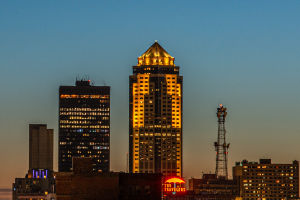The moment you step into Gardens by the Bay, it doesn't feel like a garden. It feels like the future. Steel trees glow purple under the skyline. A misty cloud forest hides a 115-foot waterfall. This isn't a typical park—it's a blueprint of how cities might breathe better in the future.
But here's what most visitors get wrong: they snap a photo in front of the Supertrees, maybe catch the light show, and move on.
The real experience begins when you go slower—when you walk through the Cloud Forest after rain, when you notice the way orchids are framed against glass, or when you finally understand why this space was built below ground level. So if you're planning to go, here's how to make it matter.
Don't Just See It—Feel the Climate Layers
Gardens by the Bay isn't just about exotic plants. It's about climate storytelling through immersive architecture.
1. Cloud Forest:
This cooled conservatory simulates tropical highlands. Step inside and you're hit by cool mist—then, unexpectedly, by sound. That thunderous fall you hear is the world's tallest indoor waterfall (115 feet). Go up via elevator, then descend slowly along the spiral path that lets you feel each altitude. You'll pass carnivorous plants, ferns from Andean slopes, and orchids suspended like jewelry.
Entry fee: Around $20 USD for adults, $12 USD for children.
2. Flower Dome:
The world's largest glass greenhouse (verified by Guinness) houses Mediterranean and arid climate plants. But the real star is the seasonal floral displays. For example, during July you may catch the Hydrangea Holidays display, blending European garden styles with floral symbolism.
Entry fee: Included with Cloud Forest ticket as a combo.
The Supertree Grove: More Than Just Lights
Everyone sees the Supertrees as Instagram icons—but they're actually functional. These 16-story structures are vertical gardens, with real plants growing up the sides, and they harvest solar energy and collect rainwater for the park.
1. OCBC Skyway:
A 72-foot-high aerial walkway connects several Supertrees. Walk it at sunset for panoramic views across Marina Bay.
Fee: Around $8 USD.
Tip: Go around 6:30 PM for fewer crowds and perfect pre-light-show lighting.
2. Garden Rhapsody Light Show:
Held nightly at 7:45 PM and 8:45 PM, this free show turns the Supertrees into glowing towers of synchronized light and music. But here's the hack: sit by the Dragonfly Lake across the field. You'll get better reflections and fewer crowds.
What People Usually Skip (But Shouldn't)
1. Kingfisher Wetlands:
Most tourists stay near the conservatories. But walk 10 minutes further into the Kingfisher Wetlands, and you'll hit a peaceful zone designed to attract migratory birds. Herons and kingfishers nest here, and the signage actually helps you identify species. Great for quiet mornings.
2. World of Plants Trail:
Located between the Supertrees and the conservatories, this loop offers short, shaded paths with plant displays that highlight medicinal uses and tropical survival strategies. If you're visiting with kids or are curious about the practical uses of plants, this is the place.
3. Bay East Garden:
Almost nobody goes here because it's separated by Marina Barrage. But if you're a runner or just want a serene skyline photo of Marina Bay Sands reflected on the water, it's unbeatable—and free.
Getting There & Planning Right
1. Transportation:
Take the MRT to Bayfront Station (CE1/DT16) and use Exit B. From there, it's a short underground walk to the entrance via Dragonfly Bridge.
2. Hours & Entry:
• Outdoor gardens: Open daily, 5:00 AM to 2:00 AM (free entry).
• Conservatories & Skyway: 9:00 AM to 9:00 PM. Last entry at 8:00 PM.
3. Best Time to Visit:
• Morning (9:00–11:00 AM): Cooler temperatures, fewer people, great for exploring Cloud Forest and Flower Dome.
• Evening (5:30–8:30 PM): Best lighting for Supertree photos, and you'll catch the light show.
4. Tips to Save & Enjoy:
• Buy a combo ticket online to save a few dollars.
• Wear comfortable shoes—there's more walking than most expect.
• Bring a light jacket for the conservatories; it gets surprisingly chilly.
The Real Takeaway: It's Not Just a Park
Gardens by the Bay is part of Singapore's long-term green vision. Built on reclaimed land, partially powered by its own solar panels, and irrigated by rainwater collection—it's as much about sustainable living as it is about orchids and light shows.
If you only stop for a photo and move on, you'll miss the larger message hidden in its design. But if you take your time, look closely, and walk a little off the main paths, this isn't just one of Singapore's top attractions. It becomes a reflection of what modern cities could be—if nature was allowed back into the design process.
Have you visited Gardens by the Bay before? Did you discover a quiet corner or unexpected view that others missed? Let me know—I'm always collecting new places to pause.


